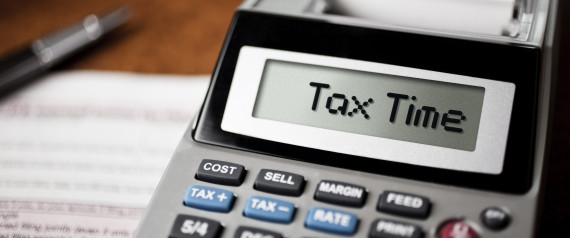Tax time is here and the deadline to file your taxes is less than a week away unless you requested an extension. If you haven't yet filed your taxes, you should really start gathering all those documents, receipts, and financial data. Many Americans will procrastinate filing their taxes, then at the last minute they will rush around to make the deadline.
That approach just opens the door for potential costly errors and unwanted stress. You may also fail to take advantage of lucrative loopholes and deductions if you hurry the process too much, so the prudent thing to do -- and the financially smart approach -- is to start as soon as possible. You'll also benefit from using whatever shortcuts and tools are available, including your credit card statements and year-end summaries.
Save Time and Hassle
Let's face it, nobody likes doing their taxes or worse, having to pay them. The process can get really frustrating, especially when you're trying to match expenses and receipts in order to re-create or establish an accurate paper trail. If you are hiring a bookkeeper, tax planner, or accountant to help you with your taxes, that's great. Being disorganized, though, is going to cost you considerably more money since they will charge you for the time it takes to sort through your shoebox full of random receipts.
The good news, however, is that if you use credit cards for most of your tax-deductible expenditures you can take advantage of online or printed account summaries to help you identify and track your expenses. The summaries are professionally formatted, easy to read, and are generally archived in your online account for instant retrieval. You can also use these summaries and account statements all year long as a tool to help design and manage your budget.
Expense Categories
It's even more critical to stay organized if you own your own business. If you are a sole proprietor, a freelancer, or otherwise self-employed, for example, you will want to show as many legitimate business expenses as possible. Then you can deduct those from your gross revenues in order to lower the amount of your taxable income.
Your year-end credit card summary will show all your card transactions by category, which can eliminate one of the first labor-intensive steps of sorting through all of them. In some cases, a quick glance at the summary will automatically tell you things like what you spent on travel, how much was spent on office supplies, and how much shipping you paid for during the year.
You can also use your credit card for paying monthly expenses such as your phone bill, insurance bill, or even some inventory purchases. Use a rewards credit card that will generate cash back or earn you other rewards, while also making it easy to track your spending in those particular categories. Provide a copy of that summary for your tax planner or transcribe that information onto your tax forms and you should be done.
Tracking Employee Expenses
If you have employees who handle some business expenses then you already know what a task it can be to keep track of their expenses as well. Receipts may get lost, they don't get turned in, and sometimes unscrupulous employees may even be charging personal expenses to the business.
To avoid all of that you can issue employee credit cards- or issue prepaid cards that come with a very limited credit line. Both of these options will give you much more control over your employees spending. If your credit card company provides an annual summary, that also solves lots of headaches you'd otherwise encounter at tax time. Everything the employee used the credit card for, down to each penny, will show up on the annual summary -- as well as on each monthly statement.
Reducing Paperwork and Storage of Receipts
Many credit card companies offer programs for account management, such as a graphical interpretation of your card use. Some will include a pie chart, for example, that shows what portion of your transactions are in each different expense category. That can be a very helpful tool to give you an instant visual snapshot of your overall budget. If some categories offer greater opportunity for a tax deduction, you may want to do more spending in those applicable categories by using plastic instead of cash.
One of the biggest benefits of year-end summaries is that you may wind up with one simple document that includes every transaction for an entire year. It may also be broken down into totals by month, quarter, and the full year. Then instead of storing or photocopying lots of individual paper receipts and adding them up by hand or through accounting software, you can just save your credit card statement along with your tax return. That reduces paperwork and paper, for an environmentally-friendly solution to your tax-related chores.
This article originally appeared on blog.comparecards.com: How Credit Cards Help With Tax Preparation.

